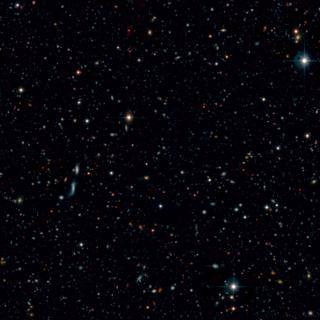Bibcode
Cedrés, Bernabé; De Daniloff, Simon B.; Bongiovanni, Ángel; Sánchez-Portal, Miguel; Cerviño, Miguel; Pérez-Martínez, Ricardo; Pérez-García, Ana María; Cepa, Jordi; Lara-López, Maritza A.; González-Otero, Mauro; Castillo-Fraile, Manuel; González-Serrano, José Ignacio; Negrete, Castalia Alenka; Padilla-Torres, Camen P.; Pintos-Castro, Irene; Pović, Mirjana; Alfaro, Emilio; Beyoro-Amado, Zeleke; Cruz-González, Irene; de Diego, José A.; Martínez, Rocío Navarro; Mancillas, Brisa; Rodríguez, Mónica I.; Valtchanov, Iván
Bibliographical reference
Astronomy and Astrophysics
Advertised on:
6
2024
Journal
Citations
1
Refereed citations
1
Description
Aims: In this paper, we revisit the data for the galaxy cluster ZwCl 0024.0+1652 provided by the GLACE survey and study the mass-metallicity function and its relationship with the environment.
Methods: Here we describe an alternative way to reduce the data from OSIRIS tunable filters. This method gives us better uncertainties in the fluxes of the emission lines and the derived quantities. We present an updated catalogue of cluster galaxies with emission in Hα and [N II] λλ6548,6583. We also discuss the biases of these new fluxes and describe the way in which we calculated the mass-metallicity relationship and its uncertainties.
Results: We generated a new catalogue of 84 emission-line galaxies with reliable fluxes in [N II] and Hα lines from a list of 174 galaxies. We find a relationship between the clustercentric radius and the density of galaxies. We derived the mass-metallicity relationship for ZwCl 0024.0+1652 and compared it with clusters and field galaxies from the literature. We find a difference in the mass-metallicity relationship when compared to more massive clusters, with the latter showing on average higher values of abundance. This could be an effect of the quenching of the star formation, which seems to be more prevalent in low-mass galaxies in more massive clusters. We find little to no difference between ZwCl 0024.0+1652 galaxies and field galaxies located at the same redshift.
Related projects

Evolution of Galaxies
Galaxy evolution is a crucial topic in modern extragalactic astrophysics, linking cosmology to the Local Universe. Their study requires collecting statistically significant samples of galaxies of different luminosities at different distances. It implies the ability to observe faint objects using different techniques, and at different wavelengths
Jorge
Cepa Nogue